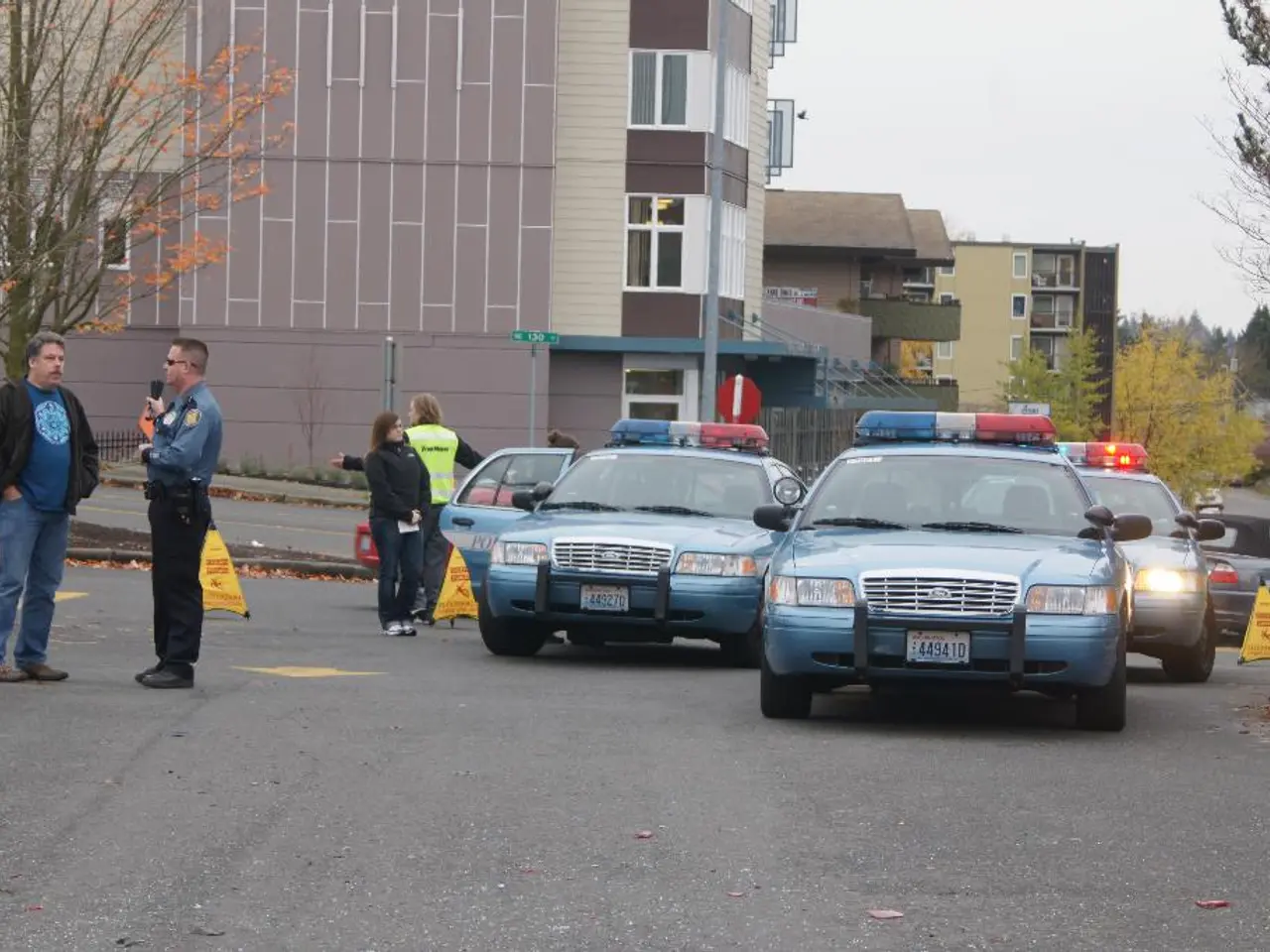Authorities evade critical inquiries concerning their handling of the devastating Texas flood disaster
In the aftermath of the devastating flood that hit Kerr County, Texas on July 4, 2025, questions are being raised about the timeliness of emergency alerts and the local emergency response.
According to a timeline of events, the Guadalupe River in Kerrville rose dramatically between 2 and 7 a.m., with floodwaters quickly overwhelming roads and bridges. The National Weather Service (NWS) issued a flash flood warning for Kerr County after 1 a.m., and a flash flood emergency—the most severe alert possible—around 4 a.m., when most residents were asleep.
At 4:22 a.m., a firefighter from the Ingram Volunteer Fire Department requested a mass emergency alert to warn residents of the impending flooding. However, the Kerr County Sheriff’s Office and the Kerrville Police Department did not send out a CodeRED Alert (a mass notification system) until 10:04 a.m., almost six hours later and well after the worst of the flooding had begun.
This delay meant that many residents were not promptly notified of the life-threatening conditions unfolding in the early morning hours.
While meteorological agencies provided timely warnings, the local emergency management response was delayed. The mass notification via CodeRED was sent at 10:04 a.m., severely behind the rapidly evolving disaster and initial request for alerts.
As a result, the community was not adequately prepared for the storm, and the high casualty rate during the disaster may be attributed to this delay.
Currently, the Texas National Guard is assisting local authorities in searching for the missing, with helicopters and drones being used in the search efforts. Some Texas officials believe that the community should have been better prepared for the storm, and Kerr County Sheriff Larry Leitha has been unable to provide a detailed timeline of the county's response to the flooding.
The first 911 calls about the flooding were received around the 4 to 5 a.m. area, according to Kerr County Sheriff Larry Leitha, who was first notified about the flooding around the same time. The National Weather Service issued a flash flood warning for Kerr County at 1:14 a.m. on Friday.
State and local officials are still in a search and rescue operation in the days since the deadly flooding, with hundreds of first responders working along the Guadalupe River in Kerr County to reunite families. As of Tuesday, the death toll from the flooding in Kerr County has risen to 110, with at least 173 people still missing across the state of Texas.
Lt. Col. Ben Baker, deputy director of law enforcement for the Texas Parks & Wildlife Department, stated that all resources are focused on recovery. Despite efforts to put together a timeline of the county's response to the flooding, the sheriff has stated that providing a timeline is not his priority at this time.
In conclusion, while meteorological agencies provided timely warnings, the local emergency management response in Kerr County was delayed, with mass emergency alerts not pushed out to residents until several hours after the flooding began and the initial request for alerts was made. This delay likely contributed to the high casualty rate during the disaster.
- Despite the National Weather Service issuing a timely flash flood warning, the local emergency response in Kerr County was delayed, with mass alerts not sent until hours after the flooding began.
- As a result of the delayed response, the community was not adequately prepared for the storm, and the high casualty rate during the disaster may be attributed to this delay.
- Beyond the meteorological aspects, the efficiency of the local emergency response and mass notification systems, such as CodeRED, will likely be a focus of future political discussions and general news reports regarding the Kerr County flood.







